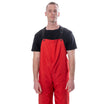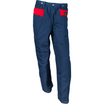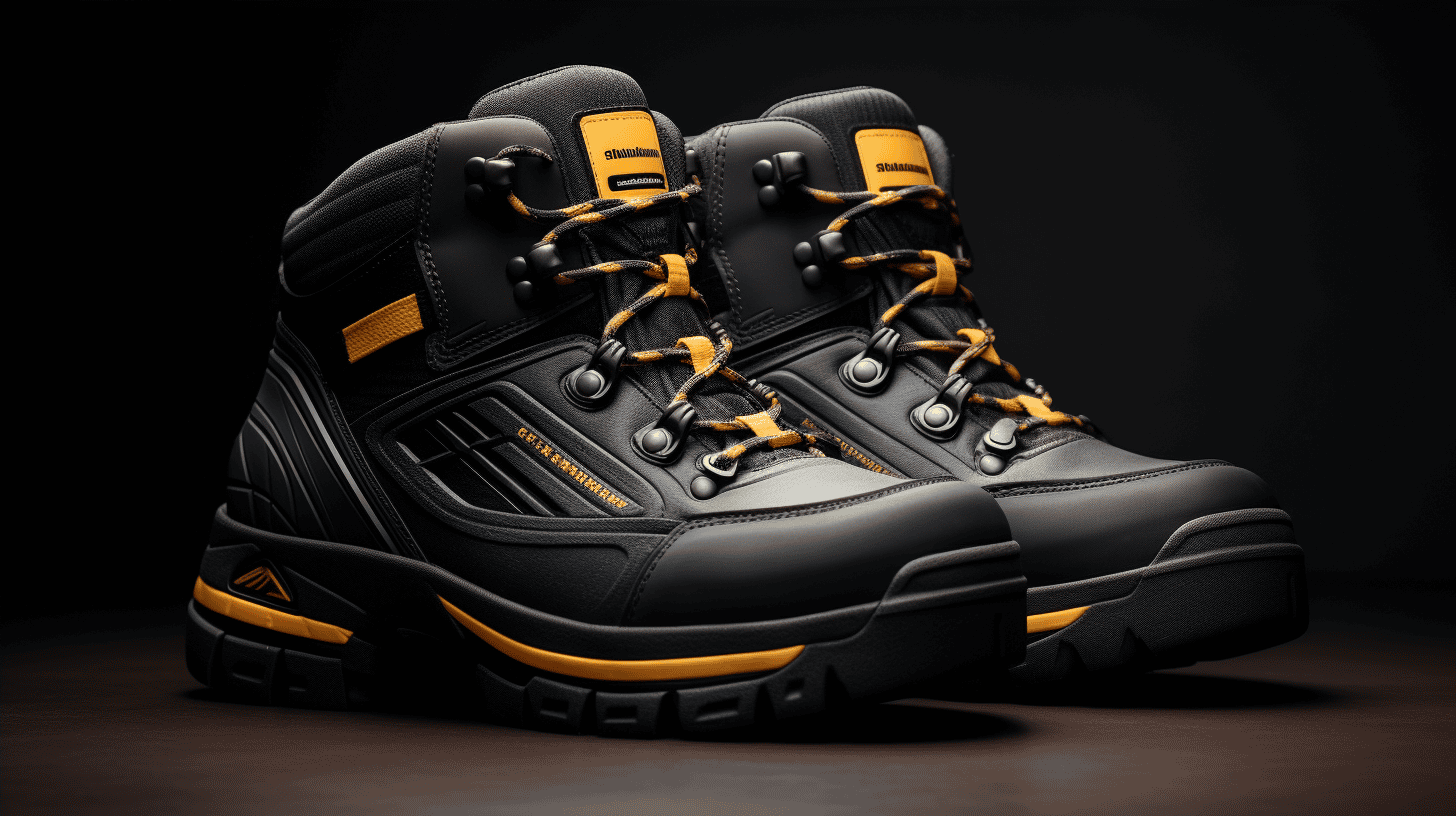Step into the world of well-being where optimal foot health reigns supreme. In today's fast-paced society, our feet bear the substantial burden of our daily activities, often taking more impact than any other body part. Yet, ironically, they seem to receive far less attention. Whether we're running marathons, walking in the park, or merely standing for prolonged periods, our choice of footwear significantly influences our feet's well-being and, in turn, our overall health. In this comprehensive coverage, we dive deep into the intriguing dialogues circling the significance of proper footwear, highlighting its critical role for injury prevention, maintaining foot health, and enhancing performance.
With fascinating insights on the prevalence of foot pain among Americans, global market growth for running shoes, the distinct connection between footwear and injury rates, the performance benefits linked with apt shoes, this article promises to be an intriguing read. It becomes a springboard for dialogue around strategic lifestyle changes and smarter buying decisions. And remember, the journey to protect and respect your feet begins with a single, comfortably placed step. So let's start stepping the right way!
Foot Pain in Americans and Its Common Causes
Is foot pain an underrated issue Americans constantly battle with? With reports indicating that 8 in 10 Americans experience ongoing foot pain, it indeed demonstrates how foot-related ailments are affecting a significant portion of the country's population. This realization urges us to explore the common causes behind this widespread occurrence and unearth actions to mitigate them.
Prevalence of Foot Pain
In today's fast-paced world, foot pain has become an unwelcome companion for many. Surprisingly, an estimated 80% of Americans grapple with chronic foot pain. But what's causing this surge in foot-related problems? Although factors vary substantially, encompassing underlying health issues, an unhealthy lifestyle, or aging, it's notable that the facet of improper footwear should not be overlook.
Impact of Improper Footwear
According to statistics, 49% reported foot pain and 33% reported callouses are directly related to improper footwear. Footwear that misfits not only interferes with natural gait but also imposes detrimental, long-term effects on our feet. On this note, it's encouraging to see an increasing popularity for Safety and Comfort Footwear that aim to deliver necessary sturdiness while ensuring optimal comfort.
Contrary to popular belief, stylish and comfortable can coexist in footwear. You don’t have to compromise one for the other. With a slew of options for protective and body-friendly shoes, people now have the opportunity to navigate their daily activities without the usual foot distress. Additionally, investing in high-quality shoes is a solid preventive measure against potential foot health risks resulting from the use of ill-fitting shoes.
Never forget, your feet bear the weight of your world. Taking the right steps in footwear choice can make a world of difference in relieving foot discomfort and preventing long-term foot health problems.
Global Running Shoes Market Growth
Stepping into the world of fitness, from leisurely park jogs to rigorous marathon training, one cannot underestimate the importance of a good pair of running shoes. Not just a physical comfort choice, but a symbol of an individual's commitment to fitness. It's no wonder that the global running shoes market is teetering on the brink of an impressive expansion.
Capitalizing on this growth isn't simply a sprint; it's a marathon necessitating a deep understanding of the market dynamics. The projected Compound Annual Growth Rate (CAGR) illustrates the pace at which the running shoes market is expected to grow - at a stunning 3.7% from 2022 to 2033.
The surge in market growth can be attributed to several key factors:
- A global uptick in health and wellness awareness
- Advent of innovative shoe technologies reflecting in greater comfort and durability
- Increase in participation in marathon events, road races, and other running activities
- The rising trend of adopting running and jogging in daily exercise routines
Pair this with maturing economies of developing countries and the outlook for the running shoes market is potent with promise. Brands that have made their mark in this field play a pivotal role in maximizing this potential with their dynamic range of offerings appealing to consumers' needs and preferences.
However, a balanced view requires us to view the challenges as well. Factors such as the higher cost of premium running shoes or cheaper, low-quality counterfeit products could create hurdles in the path of steady market growth.
The beauty within this challenge, though, lies in recognizing the undeniable potential this market holds and devising strategies to seamlessly navigate through these market intricacies. It's less about outrunning the competition and more about keeping pace with evolving consumer trends and expectations.
While achieving consistent growth may not be as simple as lacing up your running shoes and hitting the track, the horizon certainly appears positive for the global running shoes market. And it's this promising outlook that brings brands, big and small, to the starting line, ready to race toward unprecedented growth.
Influence of Footwear on Injury Rates
Footwear, more often than not, is considered just a fashion accessory. However, it plays a critical role in our health and safety. In certain sectors, such as industrial work and healthcare, the right footwear isn’t just about comfort – it might be a deciding factor in preventing injuries or accidents at the workplace. Let's deep dive into how footwear significantly influences injury rates across various demographic sections and environments.
Comparison between Standard and Tailored Footwear
When it comes to shoes, one size does not fit all. How so, you ask? Recent studies have shown a dramatic difference in injury rates between those who wear standard shoes and those who use shoes tailored to their individual needs. Interestingly, the injury rate for standard shoe users was reported to be 32.4%, while those who used tailored footwear reported an injury rate of just 17.6%. It’s not rocket science to see the correlation here – a shoe tailored to suit your unique foot structure aids balance, boosts comfort, and ultimately, reduces the likelihood of injury.
Footwear and Occupational Injuries
The right footwear can literally 'save the day' in a workplace scenario. From construction workers scaling precarious heights to chefs dashing around in slippery kitchens, safety footwear comes under the crucial umbrella of assimilating safety in work culture. Case in point - a school district managed to reduce its slip injury claims by a whopping 67% after introducing slip-resistant footwear to its staff members. Moreover, an estimated 96,000 foot and ankle work-related injuries resulting in lost workdays are reported annually, demonstrating the considerable scale of occupational injuries due to improper footwear.
Role of Footwear among the Elderly
There is no age limit when it comes to accidents caused by incorrect footwear. For the elderly, investing in the right shoe cannot be overstated. Did you know that on average, an older adult is treated for a fall-related injury every 11 seconds? Now more than ever, there is a pressing need for supportive, non-slip footwear for our ageing population to maintain their mobility and independence, while minimizing the risk of injury.
Minimal Shoes' Influence
Recently, there has been a surge in the usage of "minimal" footwear– shoes designed to mimic barefoot walking or running, promising 'natural' foot movements. However, these fashionable shoe alternatives ignore the necessity of protective padding and adequate support, causing an increased strain on the foot and leading to potential injuries. Our Avoiding Gear-Related Injuries article delves deeper into this aspect.
In light of these insights, the onus is on individuals, employers, and shoe manufacturers to prioritize the right footwear to ensure a stable stride and a safer tomorrow. After all, as they say, every journey begins with a single step - let's make sure it's a safe one.
Performance Benefits of Proper Footwear
From the sleek lines of a sprinter to the sturdy boots of a construction worker, the importance of proper footwear should never be underplayed. Not only is the ideal shoe essential for comfort, but its role in mitigating potential foot injuries, enhancing athlete performance, and managing chronic foot conditions is critical. Moreover, selecting activity-specific footwear can further minimize the risk of injuries and boost overall performance. Even if you aren't an athlete, adequate arch support in daily footwear can drastically improve foot health and physical comfort.
Athlete Performance
For athletes, the right footwear becomes an extension of their body, fine-tuning their performance on the field or in the arena. According to studies, athletes wearing appropriate footwear have fewer injuries, significantly reducing their downtime and enhancing their performance potential. The correct shoes offer optimal grip, support, and flex, critical to maintaining balance, agility, and speed even in high-intensity environments.
Role in Chronic Foot Conditions Management
Footwear's impact isn't confined merely to the domain of athletics. If you've experienced persistent pain due to chronic foot conditions, investing in the right footwear may provide some much-needed relief. Proper shoes can play a vital role in reducing discomfort and accelerating healing from both chronic conditions and acute injuries. In this instance, footwear is not just an accessory, but a therapeutic tool.
Activity-specific Footwear Benefits
Whether you're walking, running, hiking, or even working at a construction site, wearing activity-specific shoes can make a world of difference. Those selecting footwear tailored to their activities not only report better performance but also experience fewer injuries. For instance, the best footwear for workers at construction sites ensures maximum safety, durability, and comfort even on the hardest terrains or during adverse weather conditions.
Footwear Providing Arch Support
Lastly, but no less significant, is the key role footwear plays in providing arch support. Shoes with proper arch support help distribute your body weight and balance joint pressure, thereby preventing potential injuries and improving overall foot health. This is a critical aspect of daily wear shoes, as neglecting arch support can lead to long-term conditions such as plantar fasciitis or flat feet.
In sum, appropriate footwear is much more than a nod to fashion trends—it's an investment in your comfort, performance, and health. While the perfect pair may vary from person to person, understanding footwear's multiple performance benefits can guide us towards making an informed decision. Remember, every step towards the right shoe is a step towards healthier, happier feet.
Conclusion
Investing in suitable and quality footwear isn't just a matter of style; it's a step towards safeguarding your health and maximizing your efficiency in different activities. With their ability to mitigate injury risks significantly and enhance athletic performance, our choices for footwear should no longer rely on aesthetics, but also on their practical benefits.
Furthermore, for professionals who operate in potentially hazardous environments, such as loggers, Rain Gear Pro's precision-crafted chainsaw safety pants, melding unparalleled protection with optimal comfort, offer the ideal solution. Built to resist the notorious crotch blowout and fully protected with Kevlar inserts, these safety pants are a testament to the company’s commitment to using the industry's finest materials and attention to detail in gear production.
It’s not merely about having appropriate footwear, but also about having the right defensive gear for demanding tasks. Remember, what you wear on your feet – and your body – matters. So why not opt for the best protection available on the market? Find the perfect gear for you at Rain Gear Pro - because you matter, and so does your safety.
Frequently Asked Questions
-
Why is proper footwear important for injury prevention?
Proper footwear is important for injury prevention because it provides necessary support, stability, and cushioning to protect your feet, ankles, and joints from stress and impact during physical activities.
-
What are the common foot injuries that can be prevented with proper footwear?
Common foot injuries that can be prevented with proper footwear include sprains, strains, fractures, plantar fasciitis, Achilles tendonitis, and bunions.
-
What features should I look for in footwear to prevent injuries?
When choosing footwear for injury prevention, look for features like proper arch support, cushioning, shock absorption, stability, a snug fit, good traction, and flexibility.
-
Are there specific types of footwear that are more suited for certain activities?
Yes, certain activities require specific types of footwear. For example, running shoes are designed to absorb impact, while hiking boots provide ankle support and traction. It's important to choose footwear that suits the activity you'll be engaging in.
-
How often should I replace my footwear to ensure maximum injury prevention?
Footwear should be replaced when it starts to show signs of wear and tear or after a certain duration of use. The exact timeframe may vary depending on the type of footwear and frequency of use. It's generally recommended to replace athletic shoes every 300-500 miles or every 6-12 months.





















Leave a comment
This site is protected by hCaptcha and the hCaptcha Privacy Policy and Terms of Service apply.